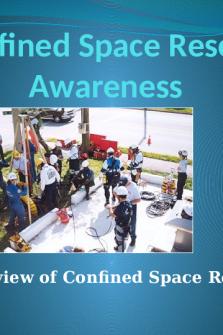Diamonds from Space PDF

| Title | Diamonds from Space |
|---|---|
| Author | Ranudi Ariyasena |
| Course | Gen Chem I Lc |
| Institution | Austin Community College District |
| Pages | 3 |
| File Size | 166.8 KB |
| File Type | |
| Total Downloads | 17 |
| Total Views | 137 |
Summary
Article on space exploration...
Description
news & views FLUORESCENT NANOPARTICLES
Diamonds from outer space Stable fluorescence is observed in nanodiamonds of molecular dimensions extracted from a meteorite.
Christoph Becher
W
hen the Beatles presented ‘Lucy in the Sky with Diamonds’ in 1967, the association of diamonds with sky didn’t come as a surprise for many scientists. As early as 1888 Russian mineralogists discovered1 that some diamonds arrived on Earth from the sky in the body of iron and stony meteorites2. Making a fortune from these diamonds is virtually impossible, as it is a painstaking effort to retrieve them from the meteorite material and because the diamonds are really tiny, just a few nanometres in size. Consequently, they have been coined meteoritic nanodiamonds (MNDs). However, the small size makes MNDs interesting for a down-to-earth application: writing in Nature Nanotechnology, Jörg Wrachtrup from the University of Stuttgart in Germany, and co-workers in Russia, Hungary, France, Estonia, the United States and Germany, demonstrate that even tiny MND can contain siliconbased luminescent defects (siliconvacancy centres, SiVs), showing stable fluorescence in the red spectral range3. The combination of these properties, the small size and bright fluorescence, makes MNDs ideally suited for biomedical imaging and fluorescence markers in life-science applications (Fig.1). Diamonds seem to be ubiquitous in space, ranging from small nanodiamonds in circumstellar media4 to the gigantic crystallized diamond core of the white dwarf star BPM 37093 (ref.5). Interstellar nanodiamonds may even contain luminescent colour centres such as nitrogen vacancies (NVs), as inferred from the spectrum of the extended red emission band in planetary nebulae6. Two major theories exist for the formation of MNDs: early work assumed transformation of graphite into diamond induced by the heat and pressure of the shock wave a meteorite experiences when entering the Earth’s atmosphere2. It is now believed that nanodiamonds have been produced outside the solar system by condensation from the gas phase in the atmospheres of carbon-rich stars, that is, stars in the red giant or planetary nebula stage7,8. The latter process is thought to be realistic as circumstellar conditions are similar to the ones technically used in chemical vapour
16
Figure 1 | Nanodiamond from out of this world. Diamond crystals smaller than 2nm extracted from meteorites emit bright fluorescence associated with silicon-vacancy impurity centres (left panel). After isolation, such nanodiamonds can be inserted as fluorescence markers into living cells (right panel). Figures reproduced with permission from: main image, © Michael Dunning/Science Photo Library; left panel, ref. 3, © 2014 NPG; right panel, ref. 15, © 2013 OSA.
deposition for diamond production8. Colour centres in these nanodiamonds might be created by incorporation of impurities from the gas phase or probably by ion implantation from high-speed particles8. For the investigations reported here, Wrachtrup and co-workers used material from a 4.6-billionyear-old meteorite, named Efremovka, found 1962 in Kazakhstan. The MNDs are extracted from the meteorite material in a multistage chemical treatment, which means that the material is boiled in strong acids and bases until everything but the diamond is dissolved. The demonstration that nanodiamonds smaller than 2nm (a few hundred carbon atoms only) can host colour centres with stable fluorescence comes as a surprise, as the stability of luminescent defects in nanodiamonds has been the subject of debate. Theoretical simulations9 predict
that NV centres are not stable in...
Similar Free PDFs

Diamonds from Space
- 3 Pages

The Real value of Diamonds
- 4 Pages

Space orientation
- 1 Pages

Innovation Space
- 3 Pages

Space - khvm
- 8 Pages

Space Matrix
- 2 Pages

Personal Space
- 1 Pages

Space exploration
- 1 Pages

Notes - Pterygomandibular space
- 2 Pages

Vectors in Euclidean Space
- 11 Pages

Australia and Space Law
- 2 Pages

Space Planning Basics
- 242 Pages

Paper 2 Space (003)
- 24 Pages

HSC Physics - Space
- 10 Pages

Confined Space Rescue
- 50 Pages

pedoman k3 confined space
- 24 Pages
Popular Institutions
- Tinajero National High School - Annex
- Politeknik Caltex Riau
- Yokohama City University
- SGT University
- University of Al-Qadisiyah
- Divine Word College of Vigan
- Techniek College Rotterdam
- Universidade de Santiago
- Universiti Teknologi MARA Cawangan Johor Kampus Pasir Gudang
- Poltekkes Kemenkes Yogyakarta
- Baguio City National High School
- Colegio san marcos
- preparatoria uno
- Centro de Bachillerato Tecnológico Industrial y de Servicios No. 107
- Dalian Maritime University
- Quang Trung Secondary School
- Colegio Tecnológico en Informática
- Corporación Regional de Educación Superior
- Grupo CEDVA
- Dar Al Uloom University
- Centro de Estudios Preuniversitarios de la Universidad Nacional de Ingeniería
- 上智大学
- Aakash International School, Nuna Majara
- San Felipe Neri Catholic School
- Kang Chiao International School - New Taipei City
- Misamis Occidental National High School
- Institución Educativa Escuela Normal Juan Ladrilleros
- Kolehiyo ng Pantukan
- Batanes State College
- Instituto Continental
- Sekolah Menengah Kejuruan Kesehatan Kaltara (Tarakan)
- Colegio de La Inmaculada Concepcion - Cebu